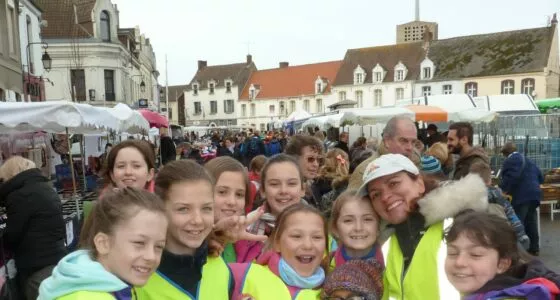Twenty-six Geography and Science students, along with Mrs Tilley, Mrs Pullen and Miss Morrow, spent almost a week in Iceland over half term to study amazing features of both the country’s geology and its environmentally-friendly energy systems. This small and sparsely populated country in the middle of the Atlantic Ocean proved to be every bit as beautiful and awe-inspiring as everyone hoped. Here is Miss Morrow’s report.
The population of Iceland is just 329,000 and it’s the most sparsely populated country in Europe. It soon became apparent to everyone on the trip that exploring the geology, culture and politics of Iceland would be fascinating.
Sagas about mythical creatures like trolls are a big part of Icelandic culture and a large proportion of the population believe in elves which live in big rocks. Usually roads will be built to specifically avoid these rocks and therefore avoid destroying the elves home. The students on the trip enjoyed hearing some of these tales during our journeys and then writing their own Icelandic sagas in the typical style.
On our first full day we set off to explore the golden circle, a circular route with some of Iceland’s main tourist attractions. Þingvellir is one of the most important geological and political places in Iceland and is a world heritage site. It is located right on the plate boundary between the North American and Eurasian Plates and was also the site of the first Icelandic Parliament in 930AD.
Gulfoss is an amazing fault-guided waterfall. Early in the 20th century it was saved from development as a hydroelectric power station by a local farmer’s daughter who walked barefoot over 100km to Reykjavik in protest. She is celebrated as Iceland’s first environmentalist and we really enjoyed learning about such an inspiring Icelandic woman.
Geysir is an area in Southern Iceland with many hot springs caused by magma activity close to the surface. The name geysir has been used in its English form of geyser to refer to similar hot springs anywhere in the world. The spring which we saw, called Strokkur, erupts around every 5 to 8 minutes. Nearby Geysir erupts far less frequently.
On the second day of our trip, we headed up to the west coast of Iceland which was beautiful and isolated, with dramatic scenery created by the volcanoes and glaciers. We started our exploration of the Saefelles Peninsula with a trip to the volcano museum. Iceland is home to around 200 volcanoes and it has a third of all lava flows found on Earth. There is a volcanic eruption every four years on average.
Iceland’s position on a constructive plate boundary means it has an abundance of geothermal energy. This means energy bills are very cheap for Icelanders and there are naturally heated pools and hot tubs wherever you go. One of the highlights was swimming in the geothermal spa and visiting a local geothermally heated pool. We were surprised how much fresh food was available in Iceland, despite its climate and remote location. We learned that this was due to lots of geothermally heated greenhouses, which are used to grow all types of fruit, vegetables and salad.
While in the west of Iceland we visited a shark museum and got to try fermented shark meat which is an Icelandic delicacy, although the smell was definitely not a highlight! After visiting some stunning black sand beaches, we were lucky to be able to try caving in a lava tube, created thousands of years ago when molten lava solidified more quickly around the outside leaving a tube as the other lava continues to run through it.
Our trip continued with the sights of Reykjavik and a tour of some spectacular scenery on the south coast, including the glacier topped volcano Eyjafjallajokull. We saw quite a few waterfalls but were most impressed by Skogafoss. It’s a beautiful waterfall created where the River Skoga, which is fast flowing and full of glacial meltwater that flows over what were ancient sea cliffs. The coastline of Iceland is in a different place now due to changes in sea level, leaving behind a spectacular 60 m wide waterfall where a beautiful rainbow can be seen on most days.
Finally, we visited Solheimajokull, a valley glacier which brings ice down to the coastal plain from the huge ice cap glacier called Myrdalsjokull. We were able to see where the glacier had retreated significantly since Sydenham High last visited 3 years ago, leading to a huge proglacial lake in front of the glacier.
Our only disappointment was that the Northern Lights didn’t hadn’t come out during our week in Iceland, but this beautiful scenic, snowy walk was a fitting end to a fabulous trip.

